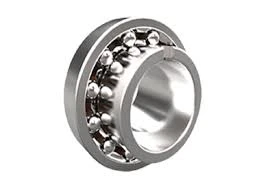
Nov . 21, 2024 15:09 Back to list
thrust roller
Understanding Thrust Rollers Design, Function, and Applications
Thrust rollers are fundamental components in various mechanical systems, known primarily for their role in bearing applications. As specialized rolling elements, thrust rollers are designed to accommodate axial loads while minimizing friction, enhancing the efficiency and longevity of machinery. This article delves into the design, functioning, and applications of thrust rollers, shedding light on their importance in modern engineering.
Design of Thrust Rollers
Thrust rollers come in various shapes and designs, including cylindrical, spherical, and tapered varieties. The choice of design often depends on the specific application and load requirements. These rollers are typically constructed from high-strength materials, such as steel or polymer, which can withstand considerable wear and tear. The surface finish of thrust rollers is also crucial, as a smoother surface can significantly reduce friction and improve performance.
The most common types of thrust rollers include
1. Cylindrical Thrust Rollers These are suitable for applications where axial loads are predominant. They are often used in conjunction with thrust cages that retain the rollers in position while allowing them to rotate freely.
2. Spherical Thrust Rollers These are designed to accommodate misalignment and can support both axial and radial loads. Their spherical shape allows them to roll smoothly under varying load conditions.
3. Tapered Rollers These are particularly efficient in applications requiring high load capacity and stability. Tapered thrust rollers can handle both radial and axial loads, making them versatile for numerous mechanical systems.
Functionality of Thrust Rollers
The primary function of thrust rollers is to support axial loads. In mechanical systems, axial loads are forces that act along the axis of the rotating shaft. Thrust rollers manage these forces by rolling along a shaft's axial surface, effectively reducing the friction between moving parts. By distributing the load evenly, thrust rollers help prevent wear and prolong the life of machinery components.
thrust roller

Another essential aspect of thrust rollers is their ability to facilitate smooth motion. In many applications, the smooth rolling action of these rollers minimizes energy loss due to friction. This efficiency is crucial in high-speed applications, where excessive drag can lead to overheating and premature failure of components.
Applications of Thrust Rollers
Thrust rollers are employed in a wide variety of industrial applications due to their efficiency and reliability. Some of the key sectors utilizing thrust rollers include
1. Automotive In vehicles, thrust rollers are commonly found in wheel bearings, transmission systems, and differential assemblies. They ensure smooth operation and stability, especially during acceleration and braking.
2. Industrial Machinery Many types of industrial equipment, such as turbines, pumps, and conveyors, rely on thrust rollers to support heavy axial loads and facilitate smooth operation. In hydraulic systems, thrust rollers help maintain the stability of pistons and cylinders.
3. Aerospace The aerospace sector requires components that can withstand extreme conditions. Thrust rollers are integral in aircraft engines and landing gear systems, where they manage heavy loads and dynamic forces.
4. Heavy Equipment In construction and mining machinery, thrust rollers play a critical role in supporting large rotating components, such as gears and shafts, facilitating efficient operation under substantial loads.
Conclusion
Thrust rollers are indispensable elements in modern machinery, offering key advantages in load management and motion efficiency. Their robust design and functionality make them suitable for a diverse array of applications across various industries. As technology advances, the design and materials used in thrust rollers continue to evolve, leading to improved performance and enhanced durability. Understanding their importance not only helps in selecting the right components for mechanical systems but also emphasizes the critical role they play in the smooth operation of countless machines that power our daily lives.
Latest news
-
Premium Deep Groove Ball Bearings | High Speed & Reliability
NewsAug.29,2025
-
Durable Scaffolding Clamps - Secure & Reliable Tube Connectors
NewsAug.28,2025
-
Common Failures in Thrust Ball Bearings and Solutions
NewsAug.22,2025
-
How Tapered Roller Bearings Can Take Shock Loads
NewsAug.22,2025
-
Angular Bearings in High-Precision Spindles
NewsAug.22,2025
-
The Impact of Misalignment on Cylindrical Roller Bearing Performance
NewsAug.22,2025
